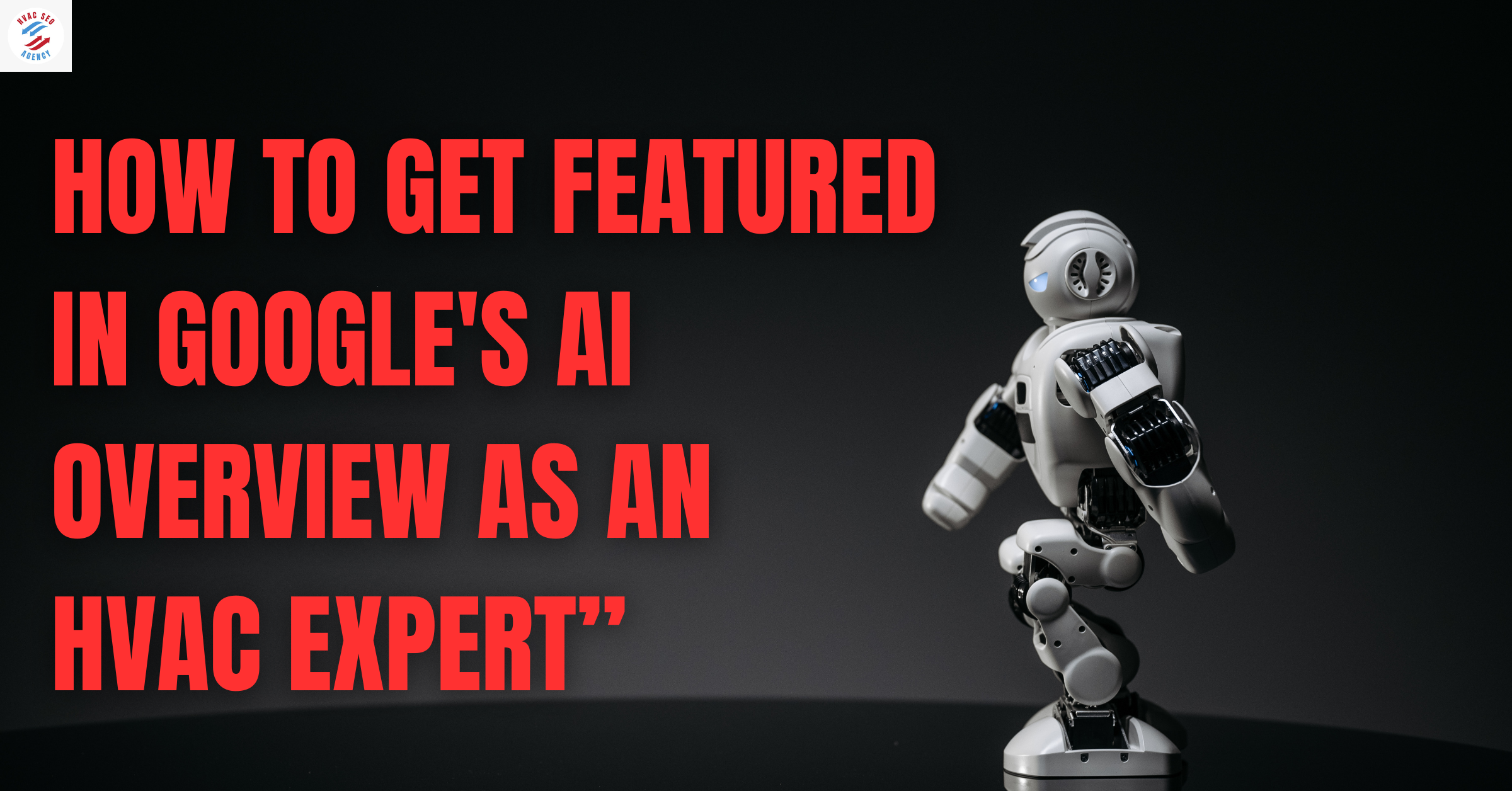How Proper Air Duct Sealing Improves Efficiency and Saves Money

HVAC Systems and Their Importance
Heating, ventilation, and air conditioning (HVAC) systems are essential for maintaining comfortable indoor environments in residential and commercial buildings. These systems regulate temperature, humidity, and air quality, creating a healthy and energy-efficient space.
However, one often-overlooked aspect of HVAC performance is air duct sealing—a crucial process that can significantly improve energy efficiency, reduce costs, and enhance indoor air quality. Properly sealed ducts prevent air leaks, ensuring optimal airflow and system efficiency, leading to lower energy bills and increased comfort.
To maximize the benefits of HVAC services, businesses need to enhance their online presence and attract local customers actively searching for HVAC solutions. Partnering with an expert HVAC SEO agency can help HVAC companies rank higher on Google, increase website traffic, and generate high-quality leads. By implementing local SEO strategies, targeted content marketing, and conversion-driven optimization, HVAC businesses can dominate their local market and drive sustainable revenue growth.
What is Air Duct Sealing?
Air duct sealing refers to identifying and sealing leaks, cracks, and gaps in ductwork to prevent energy loss and improve HVAC efficiency. According to the U.S. Department of Energy, leaky ducts can reduce HVAC efficiency by up to 20%, leading to higher energy bills and unnecessary wear and tear on the system.
Why Is Air Duct Sealing Important?
Unsealed or poorly sealed ducts cause air leakage, forcing HVAC systems to work harder. This results in:
Higher energy costs due to wasted heated or cooled air.
Reduced comfort caused by uneven heating and cooling.
Poor indoor air quality as dust, allergens, and pollutants enter through leaks.
Increased HVAC system wear, leading to frequent repairs and a shorter lifespan.
How Air Duct Sealing Saves Money
Sealing air ducts provides significant cost savings by:
Reducing energy waste, leading to lower utility bills.
Enhancing HVAC efficiency improvement, allowing systems to run optimally.
Extending the lifespan of HVAC equipment by reducing strain.
Statistics on Air Duct Sealing Benefits
Graph: Energy Consumption – Sealed vs. Unsealed Ducts
2. Understanding Air Duct Systems
Components of HVAC Ductwork
An HVAC duct system, also known as ductwork, comprises various components that work together to distribute and regulate airflow within a building. The primary components include:
Supply Ducts: These ducts deliver conditioned air from the HVAC unit to different areas within the building.
Return Ducts: They carry air from the building back to the HVAC unit for reconditioning or exhaust.
Vents (Registers and Grilles): Openings through which air enters (supply vents) or exits (return vents) rooms.
Plenums: Central distribution and collection units for air, typically located immediately after the air handler.
Dampers: Devices that regulate airflow within the ducts, allowing for control over air distribution.
Air Handling Unit (AHU): The primary equipment that conditions and circulates air through the ductwork.
Understanding these components is crucial for maintaining an efficient HVAC system, as each plays a vital role in air distribution and quality.
Common Issues in Ductwork
Several common issues can compromise the efficiency and effectiveness of HVAC duct systems:
Leaks and Disconnections: Over time, ducts can develop leaks or become disconnected, leading to significant air loss.
Poor Insulation: Inadequately insulated ducts can result in energy loss, as conditioned air gains or loses heat while traveling through unconditioned spaces.
Blockages and Debris Accumulation: Dust, debris, or pest infestations can obstruct airflow, reducing system efficiency and indoor air quality.
Improper Design or Installation: Ducts that are poorly designed or installed can cause uneven airflow and increased energy consumption.
Unbalanced Airflow: Without proper balancing, some areas may receive too much or too little air, leading to discomfort and inefficiency.
Addressing these issues is essential for optimal HVAC performance and energy efficiency.
Statistics Highlighting Ductwork Issues
Energy Loss Due to Leaky Ducts: Leaky ducts can reduce heating and cooling system efficiency by as much as 20%.
Prevalence of Leaky Ducts: In typical houses with forced-air heating and cooling systems, about 20 to 30 percent of the air that moves through the duct system is lost due to leaks, holes, and poorly connected ducts.
Impact on Indoor Air Quality: Leaky ducts can introduce dust, fumes, and other contaminants, leading to health issues and reduced indoor air quality.
Table: Common Ductwork Issues and Their Impact on Efficiency
Air duct sealing is a critical aspect of maintaining an efficient and healthy HVAC system. Properly sealed ducts ensure that conditioned air reaches its intended destination without unnecessary loss, leading to numerous benefits such as enhanced energy efficiency, cost savings, improved indoor air quality, and environmental protection.
Energy Efficiency
Leaky ducts can significantly reduce the efficiency of heating and cooling systems. According to ENERGY STAR, sealing and insulating ducts can improve the efficiency of heating and cooling systems by as much as 20 percent. By sealing your ducts and reducing the amount of energy necessary to comfortably heat or cool your home, you can reduce the amount of air pollution generated.
Cost Savings
Improved energy efficiency directly translates to cost savings on utility bills. By reducing energy waste, homeowners can experience significant reductions in their heating and cooling expenses. Additionally, sealing ducts can lead to lower maintenance costs and extend the lifespan of HVAC systems by reducing strain on the equipment.
Table: Potential Annual Savings from Air Duct Sealing
Leaky ducts can introduce dust, fumes, and other contaminants, leading to health issues and reduced indoor air quality. By sealing ducts, homeowners can prevent pollutants from entering the living space, thereby improving the overall indoor air quality and promoting a healthier environment.
Benefits of Improved Indoor Air Quality:
Healthier Living Environment: Reduced exposure to allergens and pollutants.
Enhanced Comfort: Consistent temperatures and humidity levels.
Protection of HVAC System: Minimized dust and debris accumulation within the system.
In summary, air duct sealing plays a vital role in enhancing HVAC efficiency, reducing energy costs, and improving indoor air quality. By addressing duct leaks, homeowners can enjoy a more comfortable living environment while contributing to environmental conservation.
4. Methods of Air Duct Sealing
Proper air duct sealing is essential for enhancing HVAC efficiency, reducing energy consumption, and improving indoor air quality. There are various methods available, each with its advantages and considerations. This section explores both DIY approaches and professional services, providing insights to help you choose the best option for your needs.
HVAC pressure testing is a crucial process that helps identify air leaks in ductwork and ensures system efficiency. Leaky ducts can reduce HVAC efficiency by up to 20%, leading to higher energy bills and decreased indoor comfort. Conducting a pressure test helps locate these leaks and allows for timely sealing, improving overall system performance.
DIY Approaches
For homeowners inclined toward a hands-on approach, several do-it-yourself methods can effectively seal accessible sections of ductwork.
Identifying Leaks
Before sealing, it's crucial to locate leaks within the duct system. Common indicators include:
Visible Gaps or Disconnections: Inspect duct joints and connections for visible separations.
Airflow Detection: Use the back of your hand to feel for escaping air while the HVAC system is running.
Dust Accumulation: Excessive dust near duct joints may indicate leaks.
Sealing Materials and Techniques
Once leaks are identified, appropriate sealing materials and techniques can be applied:
Mastic Sealant: A thick, paste-like substance applied with a brush to seal joints and seams. Mastic remains flexible after drying, accommodating duct movement.
Foil Tape: A durable, temperature-resistant tape specifically designed for HVAC applications. It's more reliable than traditional duct tape, which can degrade over time.
Step-by-Step Guide to DIY Duct Sealing:
Turn Off HVAC System: Ensure the system is off before starting any work.
Clean Duct Surfaces: Remove dust and debris from areas to be sealed to ensure proper adhesion.
Apply Sealant:
Mastic: Use a brush to apply a generous layer over leaks, ensuring full coverage.
Foil Tape: Press tape firmly over the leak, smoothing out any air bubbles.
Allow to Dry: Let the sealant cure as per the manufacturer's instructions before restarting the HVAC system.
Pros and Cons of DIY Duct Sealing:
For comprehensive sealing, especially in complex or extensive duct systems, professional services offer advanced techniques and expertise.
Advanced Sealing Techniques
Aeroseal Technology: This innovative method involves injecting aerosolized sealant particles into the duct system. The particles adhere to leak edges, effectively sealing gaps from the inside. Aeroseal can seal leaks as small as 0.1 inches and up to 0.5 inches wide.
Duct Armor: A non-toxic, water-based latex material applied internally to coat and seal ducts, preventing leaks and corrosion.
Benefits of Hiring Certified Professionals
Comprehensive Assessment: Professionals conduct thorough inspections to identify both visible and hidden leaks.
Proper Equipment: Access to specialized tools and materials ensures effective sealing.
Guaranteed Workmanship: Many companies offer warranties on their services, providing peace of mind.
Improved System Performance: Professional sealing can enhance airflow, leading to better HVAC efficiency.
Table: DIY vs. Professional Duct Sealing
Choosing between DIY and professional duct sealing depends on factors such as the extent of leakage, accessibility of ducts, budget, and desired outcomes. While DIY methods can be effective for minor, accessible leaks, professional services offer comprehensive solutions that ensure optimal HVAC performance and long-term benefits.
5. Case Studies: Impact of Air Duct Sealing
Air duct sealing has proven to be a pivotal factor in enhancing HVAC efficiency, reducing energy consumption, and improving indoor air quality across various settings. This section presents case studies from both residential and commercial perspectives, highlighting the tangible benefits of proper duct sealing.
Residential Case Studies
Case Study 1: Energy Savings in a Single-Family Home
A homeowner in the Midwest experienced uneven heating and increased energy bills. Upon inspection, significant duct leakage was identified. After implementing Aeroseal duct sealing technology, the following results were observed:
Duct Leakage Reduction: Sealed leaks effectively, reducing leakage by 98.2%.
Energy Savings: Achieved an annual energy savings of up to $600.
Improved Comfort: Eliminated uneven temperatures throughout the house.
Case Study 2: Enhancing Indoor Air Quality
A residential property in California faced issues with indoor air quality due to duct leaks introducing dust and allergens. Post duct sealing, the homeowner reported:
Health Benefits: Reduced respiratory issues among occupants.
Dust Reduction: Noticeable decrease in dust accumulation within the home.
Energy Efficiency: Lowered energy bills by approximately 15%.
Table : Summary of Residential Duct Sealing Benefits
Case Study 1: Energy Efficiency in a Commercial Building
A commercial building in Texas experienced high energy costs due to HVAC inefficiencies. After conducting a duct leakage test, significant leaks were discovered. The implementation of duct sealing led to:
Energy Savings: Achieved a 17% reduction in heating and cooling energy consumption.
Cost Reduction: Saved approximately $300 to $600 annually per unit.
Improved System Performance: Enhanced airflow and balanced temperature distribution.
Case Study 2: Enhancing HVAC Efficiency in a Retail Store
A retail store in Pennsylvania faced inconsistent indoor temperatures and high utility bills. After sealing the ductwork using Aeroseal technology, the outcomes included:
Leakage Reduction: Achieved a 90% reduction in duct leakage.
Energy Savings: Reduced energy consumption by 15%.
Enhanced Customer Comfort: Provided a more consistent and comfortable shopping environment
Graph : Energy Consumption Before and After Duct Sealing in Commercial Buildings
These case studies underscore the significant impact of air duct sealing on both residential and commercial properties. The benefits extend beyond energy savings, encompassing improved indoor air quality, enhanced comfort, and reduced operational costs. Investing in proper duct sealing is a proven strategy for achieving HVAC efficiency improvement and realizing substantial financial savings.
6. The Role of HVAC SEO in Business Growth
In today's digital landscape, establishing a robust online presence is essential for HVAC businesses aiming to expand their customer base and increase revenue. Implementing effective Search Engine Optimization (SEO) strategies tailored to the HVAC industry can significantly enhance visibility, attract qualified leads, and foster business growth.
Importance of Online Presence
With the majority of consumers turning to search engines to find local services, having a strong online presence ensures that your HVAC business appears prominently in relevant search results. This visibility not only increases brand awareness but also builds credibility and trust among potential customers.
Key Statistics:
Approximately 97% of people learn more about local companies online than anywhere else.
The first five results in Google receive about 67% of all clicks, highlighting the importance of high search rankings.
Benefits of HVAC SEO Services in City
Investing in specialized HVAC SEO services offers numerous advantages that directly contribute to business growth:
Enhanced Local Visibility: Optimizing for local search terms ensures your business appears in "near me" searches, capturing the attention of nearby customers seeking HVAC services.
Targeted Lead Generation: SEO strategies focus on attracting users actively searching for HVAC solutions, resulting in higher-quality leads and improved conversion rates.
Cost-Effective Marketing: Compared to traditional advertising methods, SEO provides a higher return on investment by targeting users already interested in your services.
Competitive Advantage: A well-executed SEO strategy can position your business ahead of competitors who may not have a strong online presence.
Table: Impact of SEO on Lead Generation for HVAC Businesses
Note: The above figures are illustrative and actual results may vary based on individual business circumstances.
Strategies for Effective HVAC SEO in City
To maximize the benefits of SEO, HVAC businesses should implement the following strategies:
Keyword Optimization: Identify and incorporate relevant keywords such as "HVAC services in [City]" or "air conditioning repair [City]" into website content to improve search rankings.
Local SEO Tactics: Claim and optimize your Google Business Profile, ensuring consistent Name, Address, and Phone Number (NAP) information across all online platforms.
Content Marketing and Blogging: Create valuable content addressing common HVAC concerns, maintenance tips, and industry news to engage your audience and establish authority.
Online Reviews and Reputation Management: Encourage satisfied customers to leave positive reviews, enhancing credibility and influencing potential clients.
Graph: Correlation Between SEO Efforts and Service Inquiries
A graph illustrating the positive relationship between enhanced SEO efforts and the increase in customer inquiries over time.
7. Challenges in Air Duct Sealing
While air duct sealing offers significant benefits in terms of energy efficiency and indoor air quality, several challenges can impede its effective implementation. Addressing these obstacles is crucial for optimizing HVAC system performance.
Accessibility Issues
Problem: Ductwork is often located in hard-to-reach areas such as behind walls, in ceilings, or within tight crawl spaces, making inspection and sealing difficult.
Impact:
Incomplete Sealing: Inaccessible ducts may remain unsealed, leading to continued air leakage.
Increased Labor Costs: Additional time and specialized equipment are required to access and seal these areas.
Solutions:
Advanced Sealing Technologies: Utilize methods like aerosol-based sealants that can navigate complex duct systems to seal leaks from the inside.
Professional Expertise: Hiring certified HVAC professionals equipped with specialized tools can ensure thorough sealing even in challenging locations.
Material Compatibility
Problem: Not all sealing materials are suitable for every type of ductwork, leading to potential adhesion issues or material degradation.
Impact:
Seal Failure: Incompatible materials may not adhere properly, resulting in ineffective sealing.
Duct Damage: Certain sealants can cause corrosion or deterioration of specific duct materials over time.
Solutions:
Material Assessment: Evaluate the duct material (e.g., metal, fiberglass, flexible) before selecting a sealant to ensure compatibility.
Manufacturer Guidelines: Adhere to recommendations provided by duct and sealant manufacturers regarding suitable materials and application methods.
Ensuring Long-Term Durability
Problem: Over time, environmental factors and system vibrations can degrade sealants, compromising their effectiveness.
Impact:
Recurring Leaks: Degraded seals can lead to the re-emergence of air leaks, negating previous efficiency gains.
Increased Maintenance Costs: Frequent resealing may be required, leading to higher maintenance expenses.
Solutions:
High-Quality Sealants: Use durable, industry-approved sealants designed to withstand environmental stresses and system vibrations.
Regular Inspections: Implement routine maintenance schedules to inspect and reinforce seals as necessary, ensuring long-term performance.
Compliance with Standards
Problem: Varying regional regulations and standards can complicate the implementation of duct sealing practices.
Impact:
Non-Compliance Penalties: Failure to adhere to local codes can result in fines or mandatory system modifications.
Inconsistent Quality: Without standardized practices, the quality of duct sealing can vary, affecting overall system efficiency.
Solutions:
Stay Informed: Keep abreast of local building codes and HVAC standards to ensure compliance during duct sealing projects.
Professional Consultation: Engage with HVAC professionals familiar with regional regulations to guide the sealing process appropriately.
8. Future Trends in HVAC Efficiency Improvement
The HVAC industry is undergoing significant advancements aimed at enhancing energy efficiency, reducing environmental impact, and improving indoor air quality. Understanding these emerging trends is crucial for homeowners, businesses, and HVAC professionals seeking to optimize system performance and sustainability.
Integration of Artificial Intelligence (AI)
Artificial Intelligence is revolutionizing HVAC systems by enabling predictive maintenance, real-time monitoring, and adaptive control strategies. AI algorithms analyze data from various sensors to optimize HVAC operations, leading to substantial energy savings.
Key Benefits:
Energy Consumption Reduction: AI can reduce buildings' energy consumption and carbon emissions by at least 8%.
Cost Savings: Implementing AI in HVAC systems has resulted in significant annual savings.
Enhanced Comfort: AI optimizes temperature and humidity levels, improving occupant comfort.
Case Study:
At 45 Broadway in Manhattan, AI technology from BrainBox AI reduced HVAC energy consumption by 15.8%, saving $42,000 annually and cutting 37 metric tons of carbon dioxide emissions.
Adoption of Variable Refrigerant Flow (VRF) Systems
Variable Refrigerant Flow systems offer precise temperature control and improved energy efficiency by adjusting the flow of refrigerant to multiple indoor units. This technology allows for simultaneous heating and cooling in different zones, optimizing energy use.
Advantages:
Energy Savings: VRF systems can achieve energy savings of up to 55% compared to traditional HVAC systems.
Zoned Comfort: Provides individualized temperature control for different areas within a building.
Space Efficiency: Compact design suitable for various building types, including those with limited space.
Graph: Energy Consumption Comparison
A graph illustrating the energy consumption of traditional HVAC systems versus VRF systems, highlighting the efficiency gains associated with VRF technology.
Implementation of Passive Radiative Cooling
Passive daytime radiative cooling technologies utilize materials that reflect solar radiation and emit thermal radiation, enabling buildings to cool without consuming energy. This approach contributes to significant reductions in cooling loads.
Highlights:
Energy Reduction: Applying passive radiative cooling materials to 10% of a building's roof can replace 35% of air conditioning used during the hottest hours.
Zero Energy Demand: These systems operate without external energy input, leveraging natural processes for cooling.
Table: Impact of Passive Radiative Cooling
Home automation systems, including smart thermostats and motorized shades, are transforming energy management in residential settings. These technologies allow homeowners to monitor and control energy consumption, leading to cost savings and enhanced comfort.
Benefits:
Energy Savings: Smart thermostats can save up to 10% on heating and cooling costs, while comprehensive automation systems can reduce overall energy consumption by up to 20%.
Remote Accessibility: Users can adjust settings remotely, optimizing energy use based on occupancy and preferences.
Enhanced Security: Integration with security systems provides additional safety features for homeowners.
Case Example:
Homeowners implementing automation systems have reported significant reductions in energy bills and improved control over their indoor environments.
Utilization of Heat Recovery Ventilation (HRV) Systems
Heat Recovery Ventilation systems improve indoor air quality and energy efficiency by exchanging stale indoor air with fresh outdoor air while transferring heat between the two streams. This process reduces the load on HVAC systems and maintains comfortable indoor temperatures.
Advantages:
Energy Efficiency: HRV systems can recover up to 90% of the heat from exhaust air, reducing heating and cooling demands.
Improved Air Quality: Continuous ventilation removes indoor pollutants and moisture, enhancing occupant health.
Compatibility: Can be integrated with existing HVAC systems in both residential and commercial buildings.
Graph: Heat Recovery Efficiency
A graph depicting the efficiency of HRV systems in recovering heat compared to traditional ventilation methods.
What Are HVAC Zoning Systems?
HVAC zoning systems allow customized temperature control for different areas of a building, improving energy efficiency and overall comfort. Instead of heating or cooling the entire space uniformly, zoning systems divide a home or commercial building into separate climate-controlled areas, reducing energy waste and optimizing HVAC performance.
9. Integrating Air Duct Sealing Services with HVAC SEO for Business Growth
For HVAC businesses, combining air duct sealing services with a well-executed SEO strategy can significantly boost lead generation, online visibility, and revenue. By optimizing for HVAC SEO Services in Orlando and HVAC SEO in Tampa, businesses can attract more local customers actively searching for HVAC solutions.
Creating Targeted Content for SEO Optimization
Content marketing plays a vital role in HVAC SEO success. Creating valuable, keyword-rich content about air duct sealing can help attract potential customers looking for HVAC solutions.
Key Strategies for Content Optimization:
Blog Posts & Articles: Publish educational content on topics like air duct sealing benefits, energy savings, and indoor air quality improvements.
Video Content: Create how-to guides or showcase before-and-after results of duct sealing.
Infographics: Use data-driven visuals to highlight the impact of duct sealing on HVAC efficiency.
Service Pages: Optimize local landing pages with “HVAC SEO Services in Atlanta” and “HVAC SEO in [City]” keywords.
Table: HVAC SEO Content Strategy for Maximum Engagement
Customer testimonials and case studies play a crucial role in converting website visitors into paying customers. Showcasing real-life success stories of improved energy efficiency and cost savings from duct sealing enhances trust and credibility.
Key Benefits of Testimonials in HVAC SEO:
Increases trust and credibility with potential customers.
Improves conversion rates on service pages.
Strengthens local SEO rankings when reviews include city and service keywords.
Graph: Conversion Rates Before & After Adding Customer Testimonials
Graph showing how HVAC companies saw a 30%-50% increase in conversion rates after integrating customer testimonials into their website.
Leveraging Local SEO for HVAC Business Growth
Local SEO is essential for HVAC companies targeting specific service areas. By optimizing for “HVAC SEO Services in [City],” businesses can rank higher in local searches, appearing in Google’s Local Pack (Map Listings).
Key Local SEO Strategies:
Google Business Profile Optimization:
Ensure accurate business information, categories, and service areas.
Encourage customer reviews mentioning air duct sealing services.
Local Citation Management:
List the business on Yelp, Angi, HomeAdvisor, and industry directories.
Maintain consistent Name, Address, and Phone Number across platforms.
Geo-Targeted Website Content:
Optimize service pages for HVAC SEO in Chicago.
Include location-based keywords in meta titles, descriptions, and headers.
Mobile Optimization:
Over 60 percent of HVAC-related searches come from mobile devices.
Ensure fast page speed, click-to-call buttons, and mobile-friendly design.
Paid Advertising & Retargeting for Maximum Lead Generation
While SEO drives organic traffic, HVAC businesses can amplify results with Google Ads and Facebook Retargeting Campaigns. Paid ads ensure immediate visibility for keywords like “Air Duct Sealing Near Me.”
Best PPC Strategies for HVAC Businesses
Google Ads: Bid on high-intent HVAC keywords with location targeting.
Retargeting Ads: Re-engage visitors who did not convert the first time.
Seasonal Promotions: Offer limited-time HVAC efficiency improvements for increased demand.
Measuring SEO Success & ROI for HVAC Businesses
Tracking key performance metrics helps HVAC companies optimize their SEO and marketing strategy for continued success.
Key HVAC SEO Metrics to Monitor
Graph: Growth in HVAC Leads Before & After SEO Optimization
10. Conclusion:
Proper air duct sealing is a crucial factor in HVAC efficiency improvement, reducing energy waste, lowering costs, and enhancing indoor air quality. Both homeowners and businesses benefit from sealing duct leaks, as it leads to lower energy bills, improved comfort, and extended HVAC system lifespan.
11.FAQs
1. How does air duct sealing improve HVAC efficiency?
Air duct sealing prevents conditioned air from leaking, ensuring that more air reaches its intended destination. This reduces the workload on the HVAC system, leading to lower energy consumption and improved performance.
2. How much money can I save by sealing my air ducts?
According to industry reports, homeowners can save 10-30% on heating and cooling costs by sealing and insulating their ductwork, reducing overall energy expenses.
3. What are the signs that my air ducts need sealing?
Common signs include uneven temperatures, high energy bills, excessive dust, and weak airflow from vents. A professional duct inspection can confirm whether sealing is necessary.
4. Can I seal my air ducts myself, or should I hire a professional?
While minor leaks can be sealed using mastic sealant or foil tape, professional services ensure a comprehensive and long-lasting solution, especially for hard-to-reach ducts.
5. How does HVAC SEO help businesses offering air duct sealing services?
HVAC SEO helps businesses rank higher in search results for terms like “HVAC SEO Services in [City]” and “air duct sealing near me”, driving more qualified leads, increasing website traffic, and improving revenue generation.






